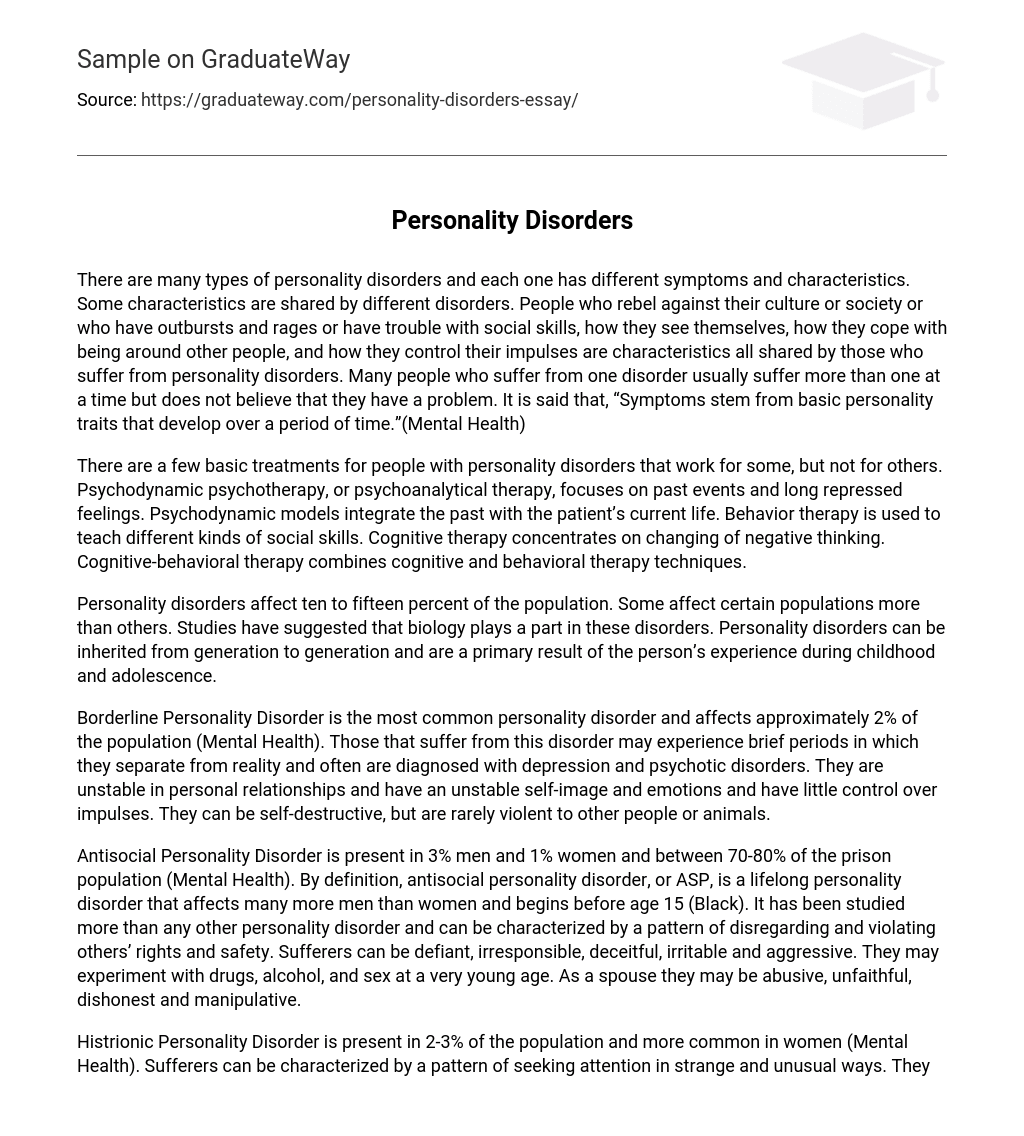Personality disorders include various types, each having its own unique symptoms and traits. Although there are common features across different disorders, individuals who exhibit deviations from societal norms, outbursts and rages, difficulties in social skills and self-perception, challenges in coping with social settings, and impulse control problems share resemblances that suggest the presence of personality disorders. It is not rare for individuals to be affected by multiple disorders concurrently without recognizing their condition. Experts in mental health clarify that these symptoms arise from underlying personality characteristics that develop gradually over time.
There are different treatments for people with personality disorders, each with different levels of effectiveness. Psychodynamic psychotherapy, also called psychoanalytic therapy, combines past events and deep emotions with the patient’s current life. Behavior therapy helps individuals learn new social skills. Cognitive therapy aims to change negative thoughts. Cognitive-behavioral therapy incorporates techniques from both cognitive and behavioral therapy.
Approximately 10-15% of the population is affected by personality disorders, with certain populations being more susceptible. Studies show that these disorders are influenced by biological factors and can be inherited or shaped by experiences during a person’s formative years.
Borderline Personality Disorder affects around 2% of the population and is the most prevalent personality disorder (Mental Health). Those with this disorder frequently experience episodes of detachment from reality, leading to diagnoses of depression and psychotic disorders. Their personal relationships, self-image, and emotions are marked by instability. Moreover, they have difficulty managing impulses and may engage in self-destructive behaviors; nonetheless, instances of violence towards others or animals are rare.
Antisocial Personality Disorder, also known as ASP, is a lifelong personality disorder that primarily affects males and typically manifests before the age of 15. It is estimated to impact 3% of men and 1% of women, with a high prevalence rate of 70-80% in the prison population (Mental Health). ASP is extensively researched unlike other personality disorders and it is defined by a consistent disregard for and violation of others’ rights and safety. People with this disorder may show defiance, irresponsibility, dishonesty, irritability, and aggression. They may also engage in early experimentation with drugs, alcohol, and sex. In marital relationships, people with ASP may exhibit abusive tendencies, infidelity, dishonesty, and manipulative behavior (Black).
Histrionic Personality Disorder affects approximately 2-3% of the population and is more prevalent in women (Mental Health). Those with this disorder tend to crave attention through unconventional means. They excessively demonstrate emotions, exhibit excessive trust and gullibility, possess an excessive self-centeredness, and prioritize their outward appearance. However, individuals with this disorder can still effectively function in society with minimal difficulties.
The psychosocial aspect of personality disorders suggests that these disorders can be associated with individuals’ experiences, particularly during their childhood or adolescence. Various types of abuse, such as physical, emotional, and notably sexual abuse, have been linked to the emergence of personality disorders. Nevertheless, it is crucial to acknowledge that not all children who have endured abuse will develop a disorder, and not all individuals with a disorder necessarily experienced abuse in their past. Instead, abuse heightens an individual’s vulnerability to developing a personality disorder.





